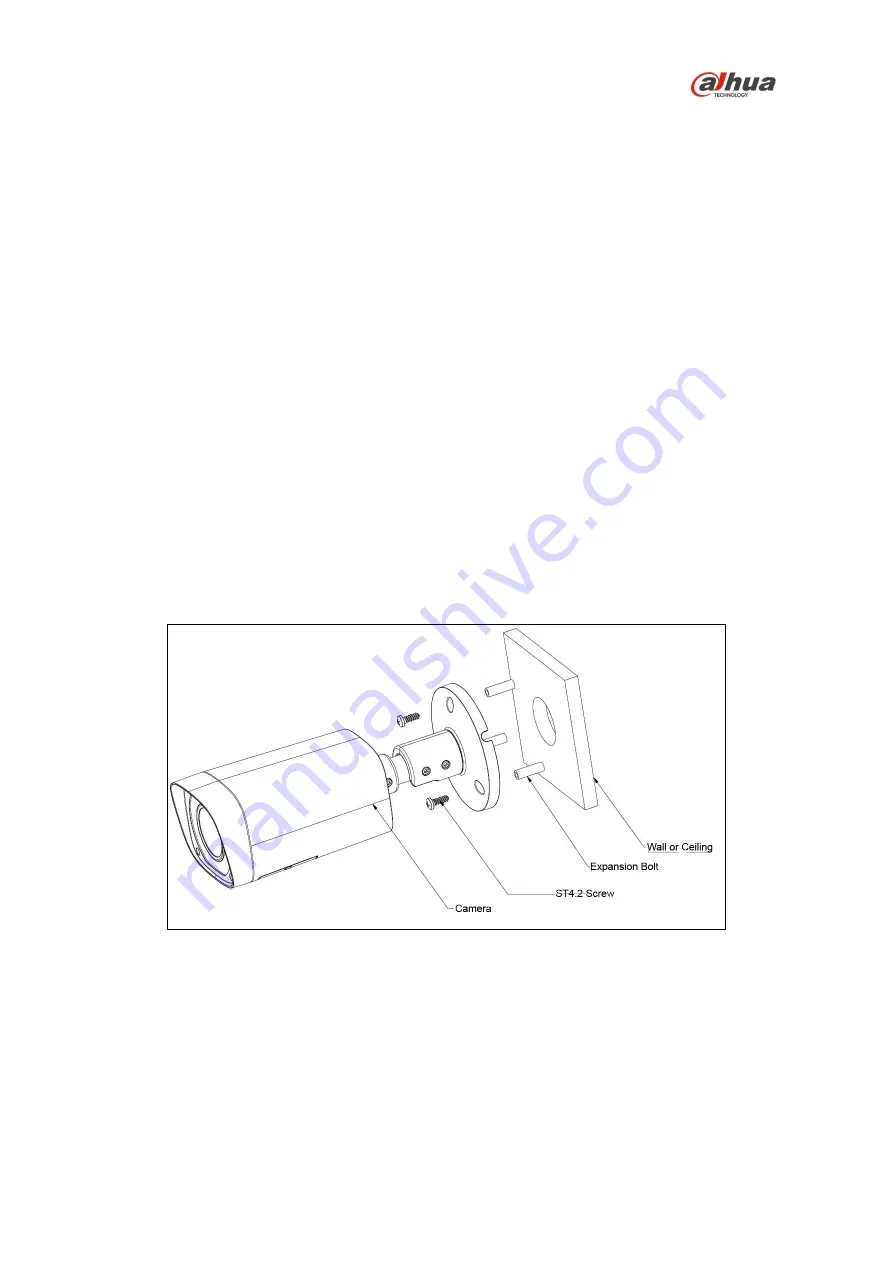
7
4 Device Installation
This section details installing the camera to a wall or to a ceiling. Note that the wall or ceiling must be
capable of supporting a minimum of three times the weight of the camera and a bracket (if used).
DO NOT connect the camera to the power supply during installation.
Warning
: DO NOT connect the camera to the power supply during installation.
Warning
: For units intended to be installed outdoors: All wiring connecting to the unit must be routed
separately inside a different permanently earthed metal conduits (not supplied).
Warning
: Install external interconnecting cables in accordance to NEC, ANSI/NFPA70 (for US
application) and Canadian Electrical Code, Part I, CSA C22.1 (for CAN application) and in
accordance to local country codes for all other countries. Branch circuit protection incorporating a 20
A, 2-pole Listed Circuit Breaker or Branch Rated Fuses are required as part of the building installation.
A readily accessible 2-pole disconnect device with a contact separation of at least 3 mm must be
incorporated.
Warning:
DO NOT remove the protective film from the dome until the installation is complete to
protect the dome from distortions from fingerprints, oil, grease or other contaminants.
Note
: Dahua recommends attaching a “drip loop” (flex or hard conduit) during installation to ensure
condensation does not form in the mount or the conduit.
4.1 Mounting the Camera
Figure 4-1
1. Remove the camera, the mounting template, hex key, and the hardware package from the box.
2. Apply the mounting template to the mounting medium. Pre-drill the three (3) perimeter holes for
the expansion bolts, using a drill bit that is no wider than the expansion bolt.
3. Drill the center hole to route the cables from the camera through the installation medium.
4. Insert an expansion bolt into each pre-drilled perimeter hole.
5. Route the cables from the back of the camera through the installation medium and align the three
(3) holes on the base of the camera with the expansion bolts.














